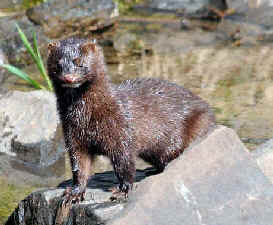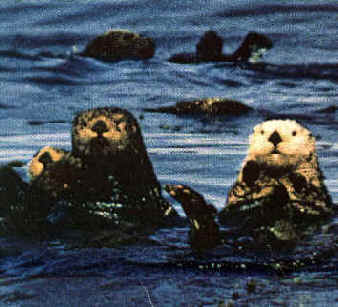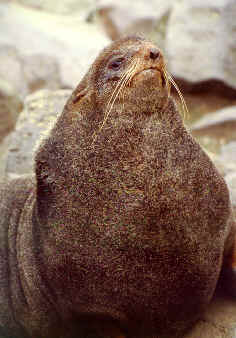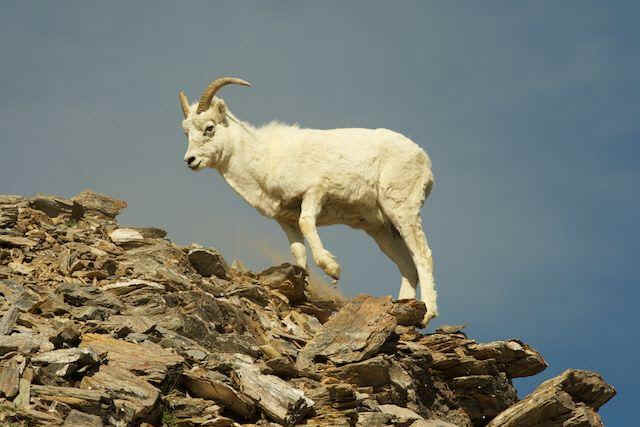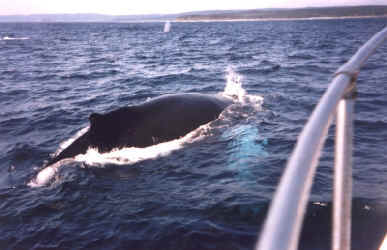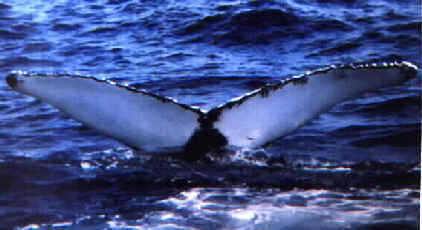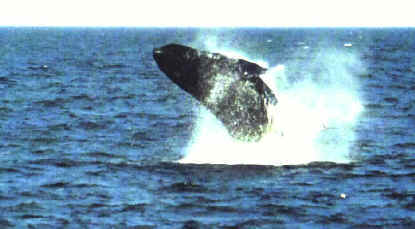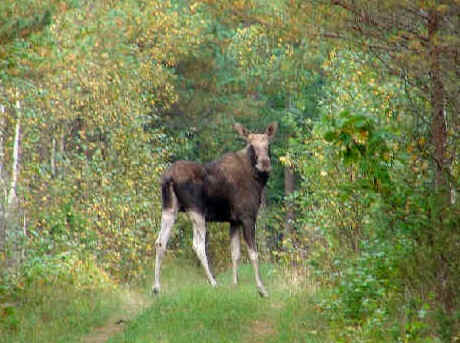 MAMMALS
MAMMALS
in
Alaska
noting with an (*)
those found during
Focus On Nature Tours
1995 thru 2015
during the months
of May and June
A List of Alaska Mammals by Armas Hill
Photo at upper right: MOOSE photographed during a FONT tour
Codes:
SPECIES CLASSIFIED AS THREATENED GLOBALLY:
(t1): critically threatened
(t2): endangered
(t3): vulnerable
(nt): classified as near-threatened globally
(i): introduced in the area of Alaska where
seen
Species seen during our tours in Alaska noted with an (*)
(ph): species with a photo in the FONT website
Areas with
Wildlife in Northern Alaska:
the GATES OF THE ARCTIC NATIONAL PARK & PRESERVE
From the Dalton Highway west, much of the Brooks Range is in this park, one of
the premier wilderness areas in the US national park system. It encompasses 8.4
million acres, and protects primeval landscapes, their flora and fauna, and the
culture and traditions of Alaskan native people.
The forester and conservationist Robert Marshal explored the area in the 1930s.
Impressed by two massive peaks flanking the North Fork of the Koyukuk River, he
called them the "Gateway to the Arctic".
This area was visited during the FONT Alaska Tour in June
2013.
the ARCTIC NATIONAL WILDLIFE REFUGE
From the Dalton Highway area, near Atigun Canyon, this refuge extends east
across the Brooks Range and the North Slope to Canada. it is an extraordinary
wilderness.
The Porcupine Caribou Herd (named for the Porcupine River), Polar Bears, and
Musk Oxen depend upon its unspoiled environment.
The pioneer Alaskan conservationists Olaus and Margaret Murie traveled the
region by dog team and canoe, and were instrumental in gaining refuge status for
the area.
Species occurring in the Arctic National Wildlife Refuge
are coded in this list with: ANWR
the KANUTI NATIONAL WILDLIFE REFUGE
Located west of the Finger Mountain area (visited during
the FONT Alaska Tour in June 2013), this refuge is slightly larger than
the US state of Delaware. It protects large wetland areas that are critical to
nesting waterfowl and other wildlife. Resources provide sustenance for the
people of the Koyukuk River valley.
the YUKON FLATS NATIONAL WILDLIFE REFUGE
Encompassing an area larger than Connecticut and Vermont combined, this refuge
protects a vast complex of lakes and rivers in the Yukon River watershed
upstream from the Dalton Highway. Wildlife thrives in the area.
The Yukon River was crossed during the FONT Alaska Tour in
June 2013 on the only bridge over the large river in Alaska, along the Dalton
Highway.
Links:
Upcoming
FONT Alaska Tour Itineraries Mammals
of North America
Birds in Alaska
Butterflies in Alaska
Wildflowers & Other Plants in Alaska
Alaska Marine Life (including Fish)

SHREWS
- Cinereus Shrew ______
ANWR
Sorex cinereus
Sorex cinereus
is also called the Masked Shrew. It lives in wet areas and
forests.
- Pygmy Shrew ______ ANWR
Sorex hoyi
Sorex hoyi
lives in forests and open areas, south of the Brooks Range.
- Water Shrew ______
Sorex palustris
- Glacier Bay Water Shrew ______
Sorex alaskanus
Sorex alaskanus is endemic to
Alaska.
- Tundra Shrew ______ ANWR
Sorex tundrensis
Sorex tundrensis
live on the wet tundra and in forests.
- Barren Ground Shrew ______
ANWR
Sorex ugyunak
Sorex ugyunak
lives on the wet tundra and in forests.
- Pribilof Island Shrew (t2) (*)
______
Sorex pribilofensis (name changed in 1997 from
Sorex
hydrodromus)
Sorex pribilofensis is
endemic to the Pribilof Islands.
- Montane
(or Dusky) Shrew ______ ANWR
Sorex monticolus
Sorex monticolus
lives in wet meadows and forests south of the Brooks Range.
- Tiny Shrew ______
Sorex yukonicus
The Tiny Shrew was described in 1997. The species is endemic to
Alaska.
LAGOMORPHS
- Snowshoe Hare (*) ______ ANWR
Lepus americanus
The Snowshoe Hare lives in forests and shrub thickets.
- Alaskan Hare (*) ______
Lepus othus
- European Rabbit (i) ______
Oryctolagus cuniculus
An introduced species in Alaska, the European Rabbit occurs in
and around some urban and suburban localities.
- Collared Pika (*) ______
Ochotona collaris
SQUIRRELS, MARMOTS
- Arctic Ground Squirrel (ph) (*)
______ ANWR
Spermophilus (formerly
Urocitellus) parryii
The Arctic Ground Squirrel lives in well-drained areas.

Arctic Ground Squirrel
(photo by Howard Eskin)
- American Red Squirrel (*) ______
ANWR
Tamiasciurus hudsonicus
The American Red Squirrel lives in forests.
- Northern Flying Squirrel ______
Glaucomys sabrinus
- Hoary Marmot (*) ______
Marmota caligata
In Alaska, February 2nd is celebrated as "Marmot Day".
- Alaska Marmot ______ ANWR
Marmota broweri
The Alaska Marmot lives in rocky, mountainous areas.
- Woodchuck (ph) (*) ______
Marmota monax ochracea
PORCUPINE
- North American Porcupine (ph) (*)
______ ANWR
Erethizon dorsatum (the
single member of its genus)
The North American Porcupine lives in forests and shrub
thickets.
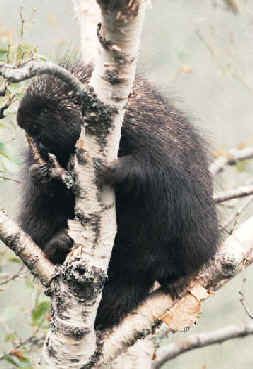
North American Porcupine
(photo by Doris Potter)
MUSKRAT
- Muskrat (ph) (*) ______
ANWR
Ondatra zibethicus (the
single member of its genus)
The Muskrat lives in ponds and marshes south of the Brooks Range.

Muskrat
(photo by Doris Potter)
BEAVER
- American Beaver (ph) (*) ______
ANWR
Castor canadensis
The American Beaver lives in lakes and rivers south of the Brooks
Range.
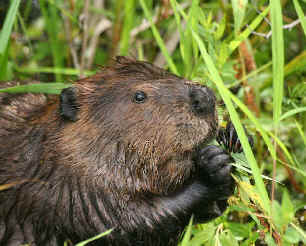
American Beaver
(photo by Doris Potter)
MICE, RATS, VOLES
- Meadow Jumping Mouse ______
Zapus hudsonius
- North American Deermouse ______
Peromyscus maniculatus
- Northwestern (or Forest)
Deermouse ______
Peromyscus keeni
- Bushy-tailed Woodrat ______
Neotoma cinerea
- Brown
(or Norway) Rat (i) ______
Rattus norvegicus
- House Mouse (i) ______
Mus musculus
- Northern Red-backed Vole ______
ANWR
Clethrionomys rutilus
The Northern Red-backed Vole lives on the tundra and
in forests.
- Southern Red-backed Vole ______
Clethrionomys gapperi
The Southern Red-backed Vole
occurs in southeastern Alaska.
- Western Heather Vole ______
Phenacomys intermedius
The first Western Heather Vole specimen in Alaska was identified
in 1999 near Hyder.
- Long-tailed Vole ______
Microtus longicaudus
The Long-tailed Vole is in the interior of southeastern Alaska.
- Taiga Vole (*) ______ ANWR
Microtus (formerly Aulacamys) xanthognathus
The Taiga Vole is also called the Yellow-cheeked Vole. It
lives in forests and wet areas.
- Singing Vole (*) ______ ANWR
Microtus
(formerly Stenocranius) miurus
In Alaska, there are 4 subspecies of the Singing Vole.
The Singing Vole lives in well-drained tundra and shrub thickets
near water.


 MAMMALS
MAMMALS






